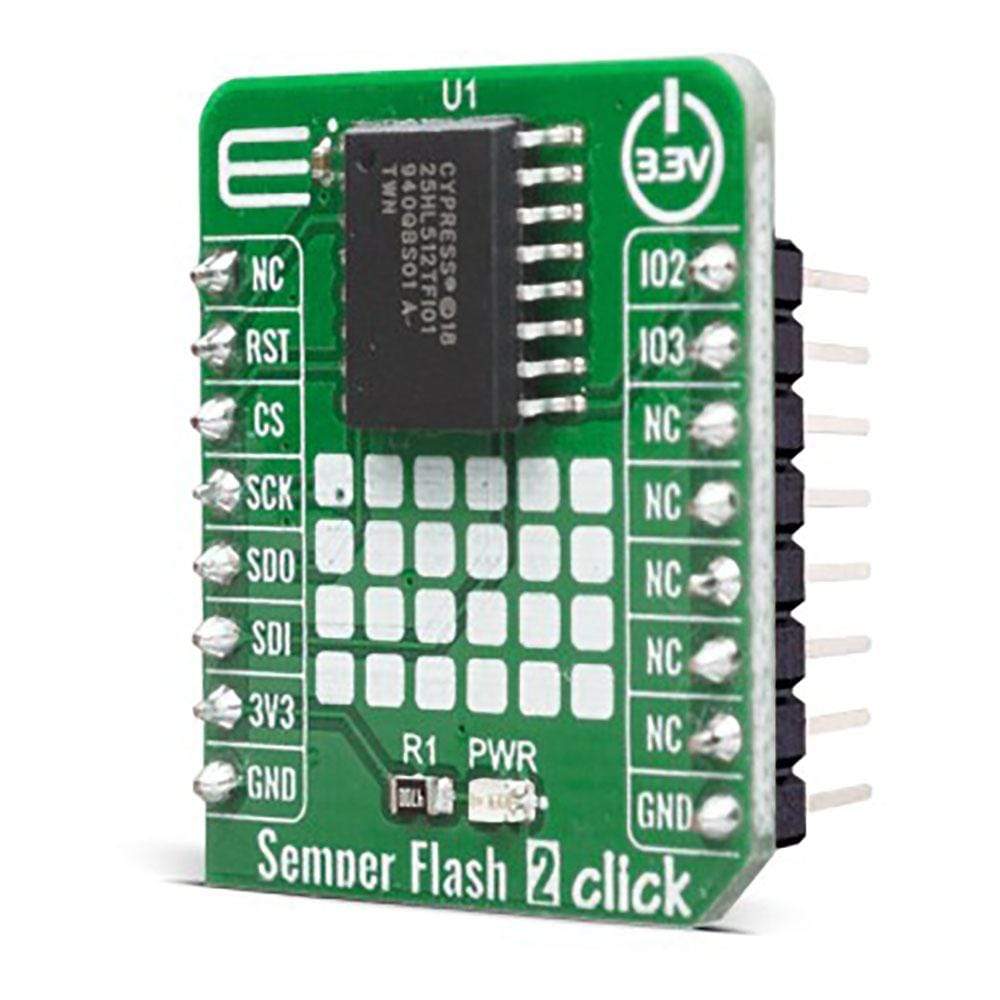
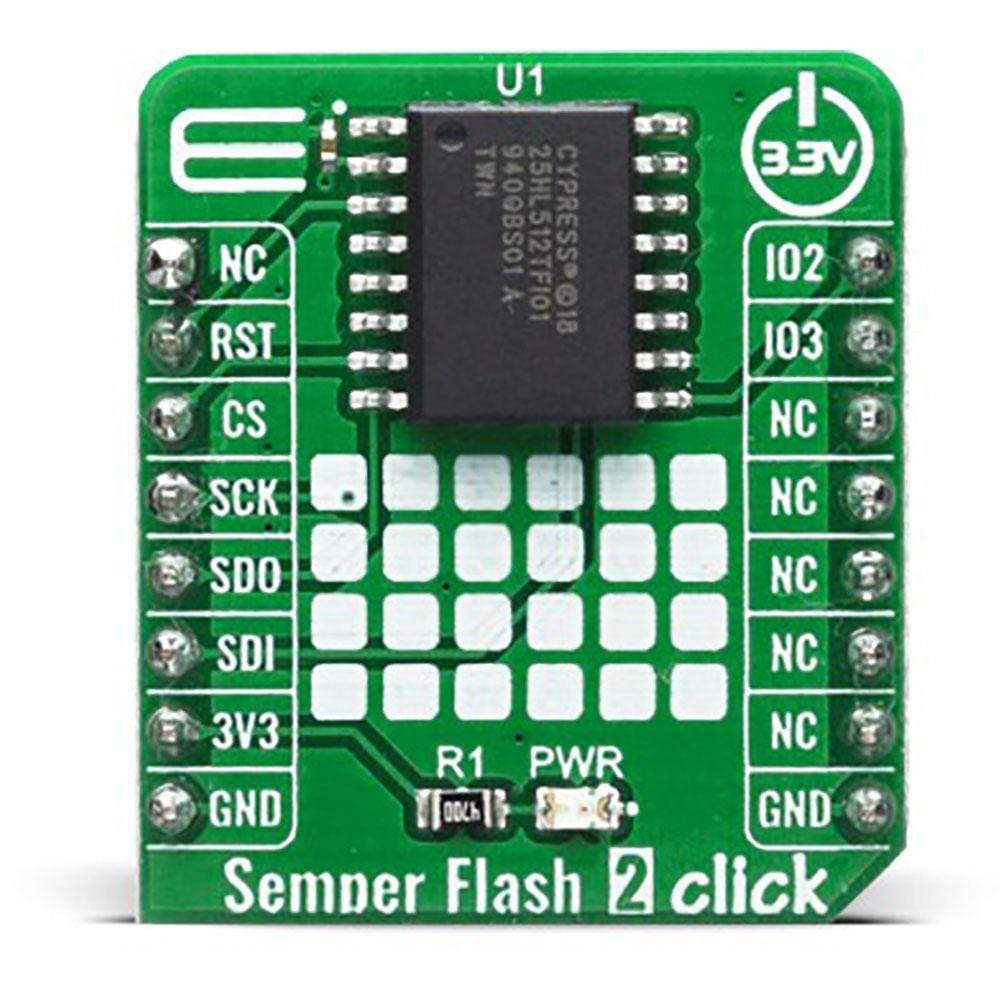
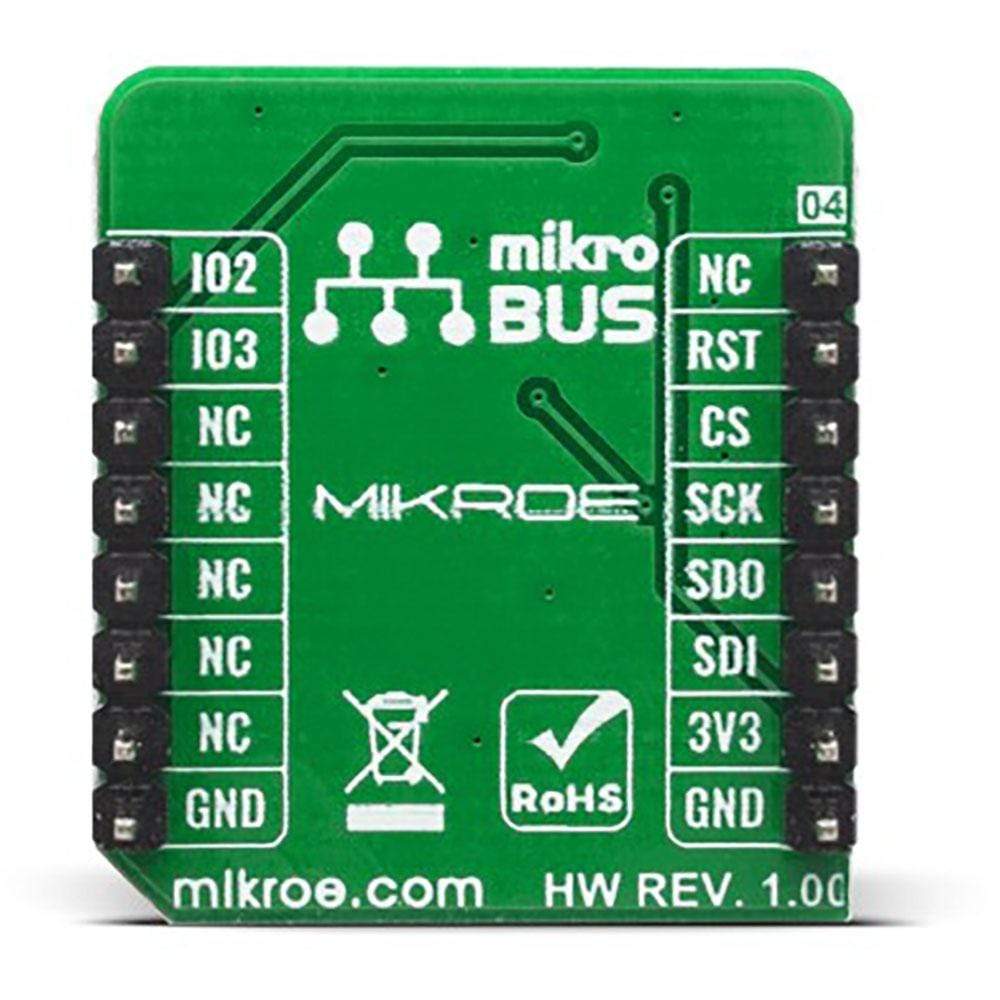
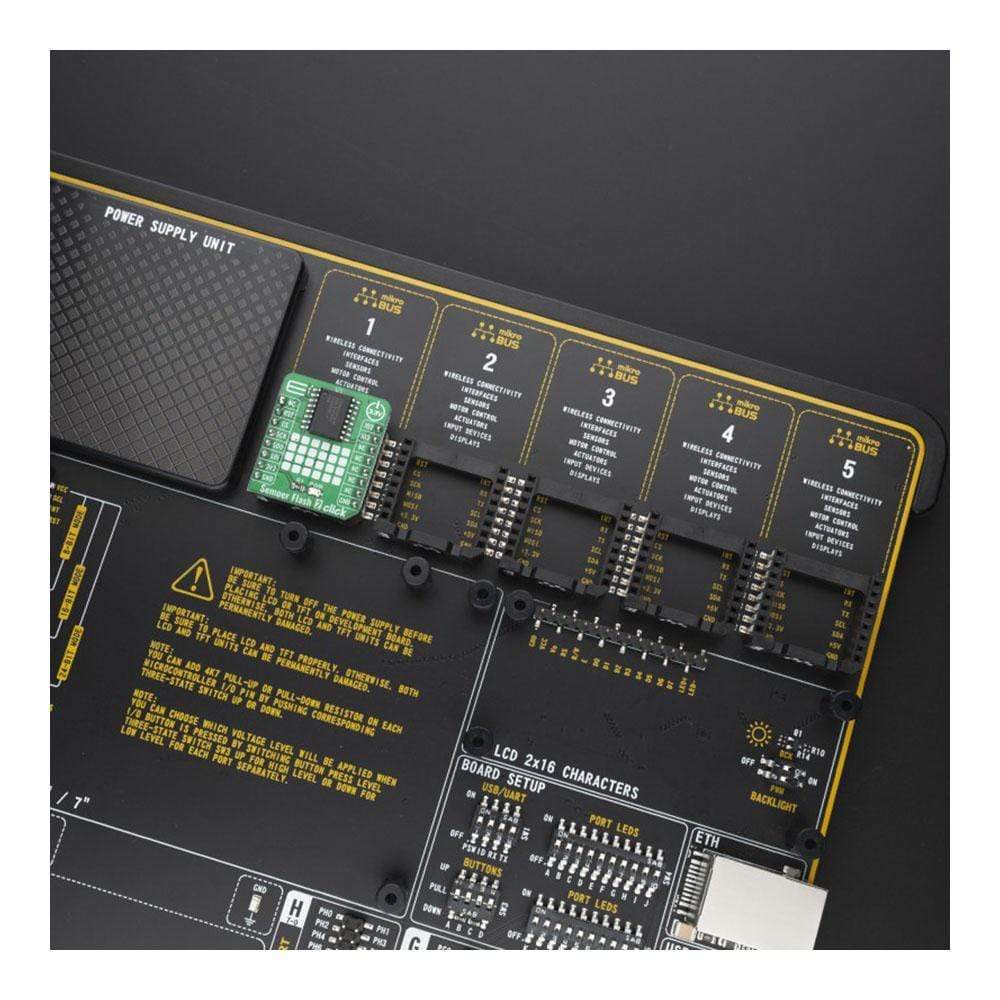
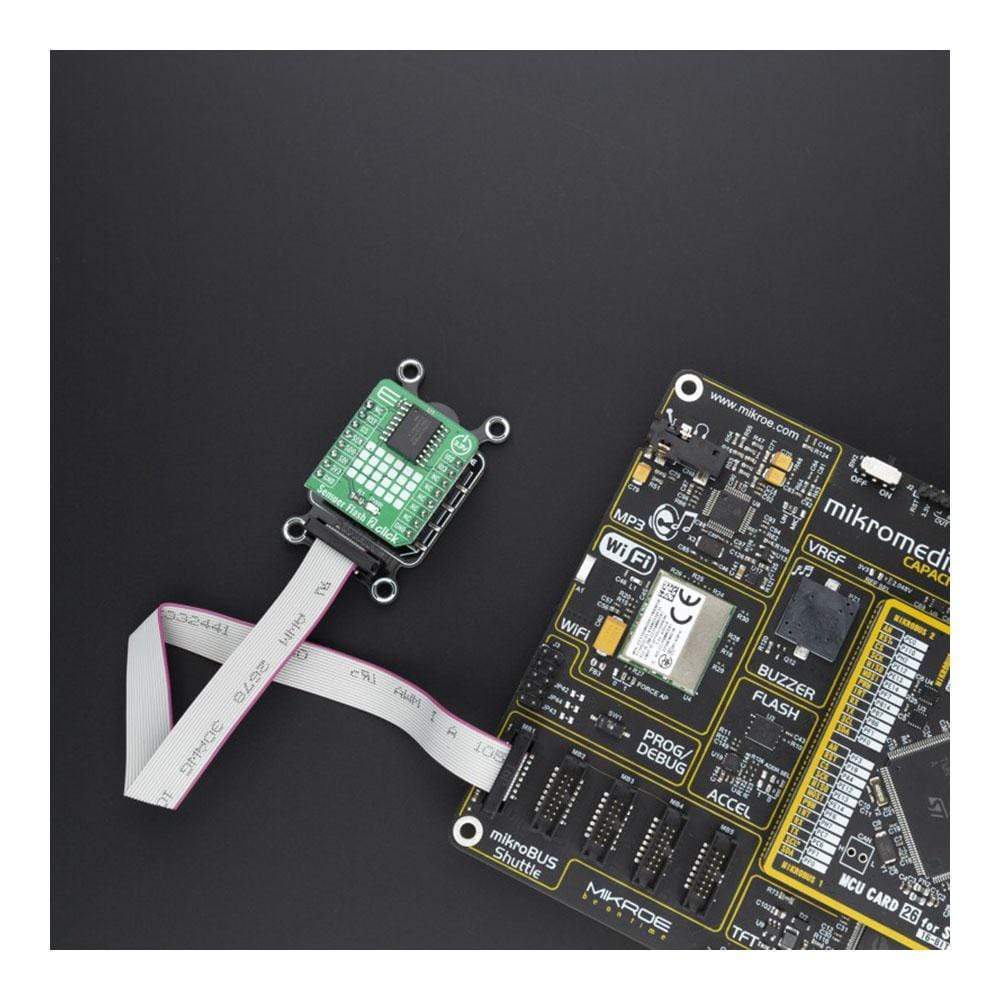
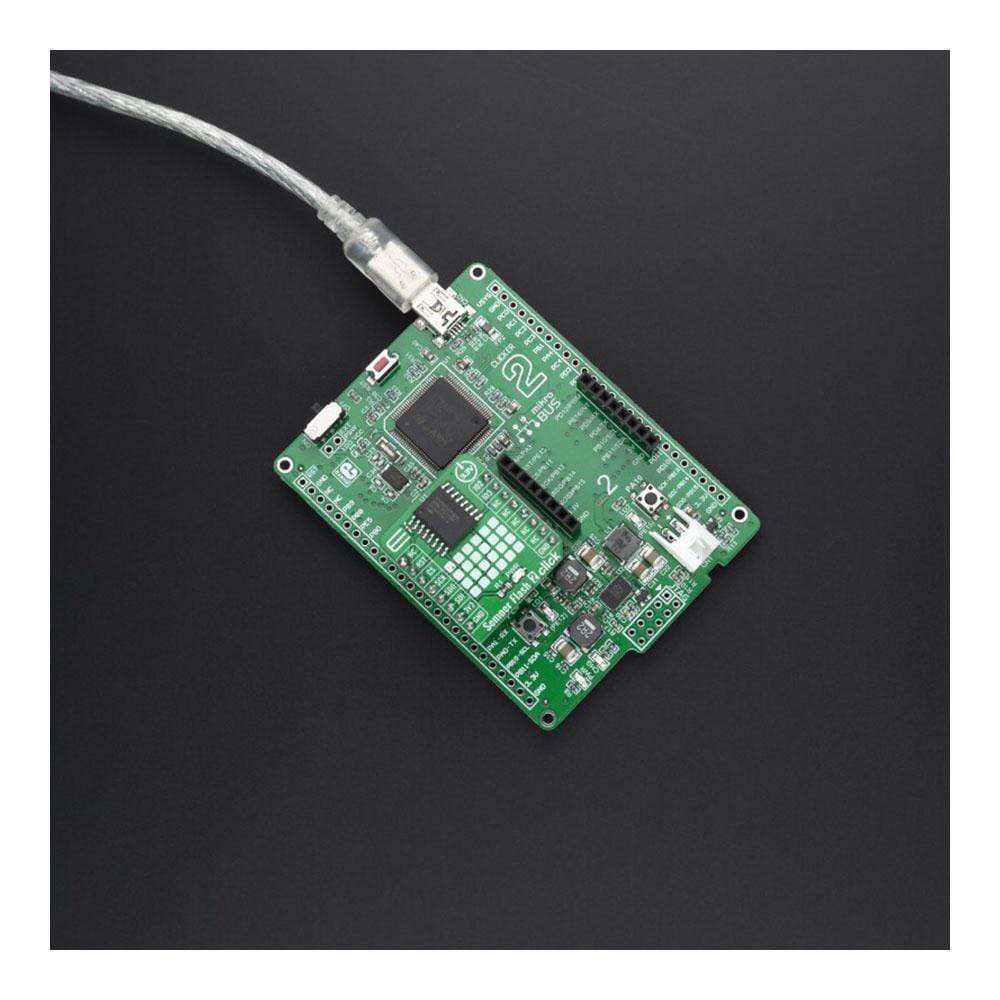
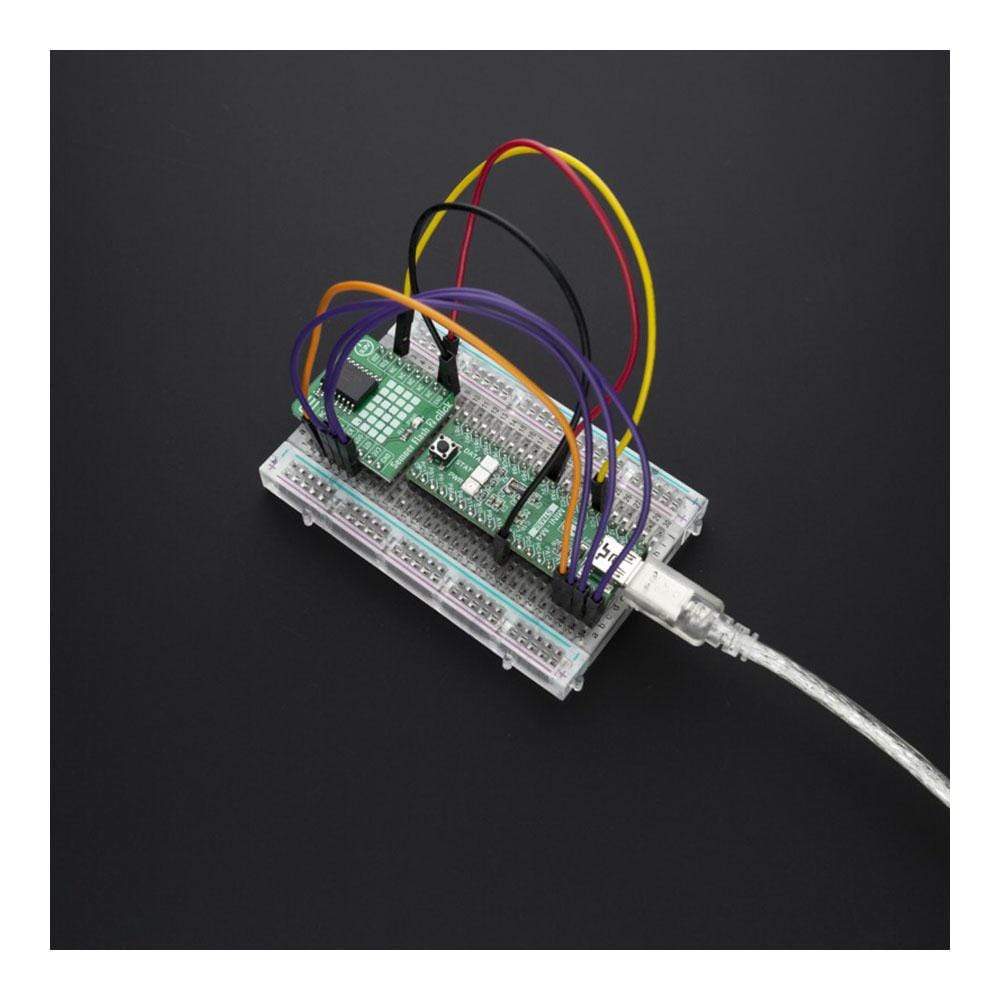
Key Features
Overview
The Semper Flash 2 Click Board™ features the S25HL512T from Cypress, a perfect solution for the mass storage option in various embedded applications. With fast performance being one of its key features, Semper Flash 2 click can also be used for code shadowing, execute-in-place (XIP), and data storage. The Cypress Semper Flash with Quad SPI family of products is high-speed CMOS, MirrorBit NOR flash devices. Semper Flash is designed for Functional Safety with development according to ISO 26262 standard to achieve ASIL-B compliance and ASIL-D readiness. The 512 Mbit SPI Flash memory module is one of the fastest and most reliable Flash modules on the market, with a 3.0V core and I/O voltage.
The Semper Flash 2 Click Board™ is supported by a mikroSDK compliant library, which includes functions that simplify software development. This Click Board™ comes as a fully tested product, ready to be used on a system equipped with the mikroBUS™ socket.
Downloads
Das Semper Flash 2 Click Board™ verfügt über das S25HL512T von Cypress, eine perfekte Lösung für die Massenspeicheroption in verschiedenen eingebetteten Anwendungen. Da schnelle Leistung eines seiner Hauptmerkmale ist, kann Semper Flash 2 Click auch für Code Shadowing, Execute-in-Place (XIP) und Datenspeicherung verwendet werden. Die Cypress Semper Flash mit Quad SPI-Produktfamilie besteht aus Hochgeschwindigkeits-CMOS-MirrorBit-NOR-Flash-Geräten. Semper Flash ist für funktionale Sicherheit mit Entwicklung gemäß ISO 26262-Standard ausgelegt, um ASIL-B-Konformität und ASIL-D-Bereitschaft zu erreichen. Das 512-Mbit-SPI-Flash-Speichermodul ist eines der schnellsten und zuverlässigsten Flash-Module auf dem Markt, mit einem 3,0-V-Kern und einer E/A-Spannung.
Das Semper Flash 2 Click Board™ wird von einer mikroSDK-kompatiblen Bibliothek unterstützt, die Funktionen enthält, die die Softwareentwicklung vereinfachen. Dieses Click Board™ wird als vollständig getestetes Produkt geliefert und ist bereit für den Einsatz auf einem System, das mit der mikroBUS™-Buchse ausgestattet ist.
| General Information | |
|---|---|
Part Number (SKU) |
MIKROE-4028
|
Manufacturer |
|
| Physical and Mechanical | |
Weight |
0.018 kg
|
| Other | |
Country of Origin |
|
HS Code Customs Tariff code
|
|
EAN |
8606018718153
|
Warranty |
|
Frequently Asked Questions
Have a Question?
Be the first to ask a question about this.







